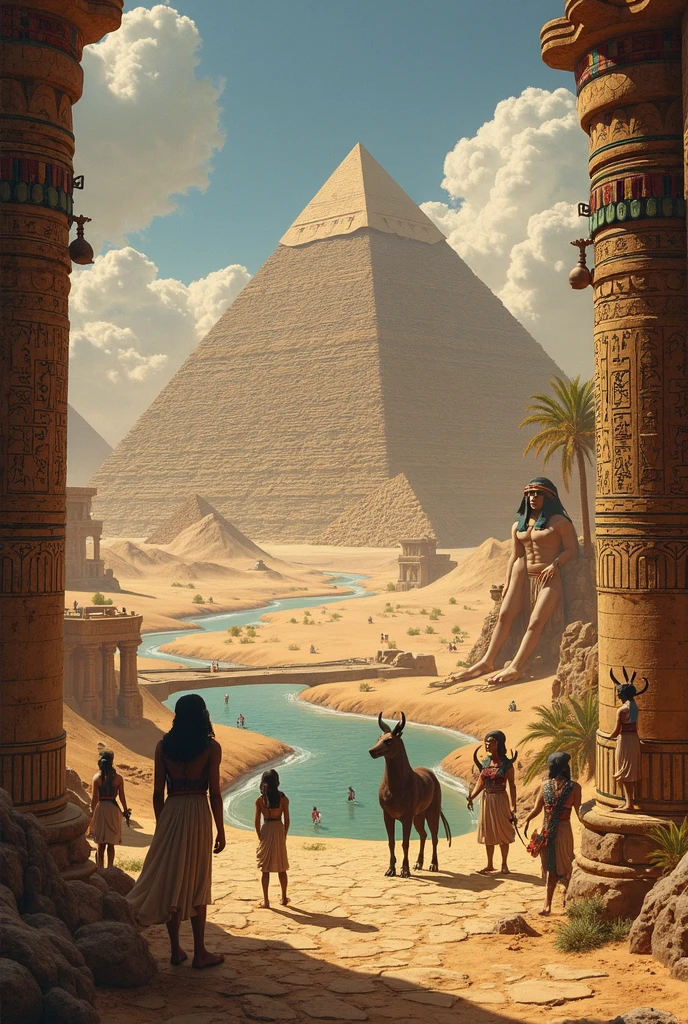Jain Mythology: Exploring the Spiritual Legacy of the Tirthankaras
Jain mythology is a rich tapestry of spiritual teachings, cosmic cycles, and enlightened beings known as Tirthankaras. These revered figures are central to Jainism, guiding followers toward liberation (moksha) through principles like ahimsa (non-violence) and strict ascetic practices. Among the most celebrated Tirthankaras is Mahavira, the 24th and final spiritual teacher of this era. This article delves into the profound mythology of Jainism, exploring its key figures, doctrines, and the path to spiritual freedom.
Who Are the Tirthankaras?
The term Tirthankara translates to “ford-maker,” signifying those who have crossed the ocean of rebirth and shown others the way to liberation. In Jain cosmology, time is cyclical, and each era produces 24 Tirthankaras who revive the teachings of Jainism. These beings are not gods but enlightened souls who have attained perfect knowledge (kevala jnana) through rigorous discipline.
- Rishabhanatha (Adinatha) – The first Tirthankara, believed to have established societal structures.
- Parshvanatha – The 23rd Tirthankara, who emphasized non-violence centuries before Mahavira.
- Mahavira – The last Tirthankara of this cosmic cycle, who systematized Jain philosophy.
The Lives of the Tirthankaras
Each Tirthankara undergoes a similar life journey: born into royalty, renouncing worldly life, enduring extreme austerities, and finally achieving enlightenment. Their teachings emphasize detachment, ethical conduct, and the eradication of karma.
| Tirthankara | Symbol | Key Teachings |
|---|---|---|
| Rishabhanatha | Bull | Agriculture, governance, and asceticism |
| Parshvanatha | Serpent | Non-violence and meditation |
| Mahavira | Lion | Five great vows (ahimsa, truth, non-stealing, celibacy, non-possession) |
Mahavira: The Last Tirthankara
Mahavira, born Vardhamana, is the most well-known Tirthankara of the current era. His life exemplifies the Jain ideals of renunciation and self-discipline. After abandoning his royal comforts at age 30, he practiced severe austerities for 12 years, ultimately attaining omniscience. His teachings form the core of Jain doctrine, emphasizing:
- Ahimsa – Absolute non-violence toward all living beings.
- Aparigraha – Non-attachment to material possessions.
- Karma – The belief that actions bind the soul to the cycle of rebirth.
For a deeper dive into Mahavira’s life, visit Encyclopedia Britannica.
The Concept of Ahimsa in Jain Mythology
Ahimsa is the cornerstone of Jain ethics, extending beyond physical harm to include mental and emotional violence. Jains practice this principle meticulously, often adopting vegetarianism, avoiding root vegetables (to prevent harm to microorganisms), and even filtering water to protect tiny life forms.
Levels of Ahimsa
Jain texts classify ahimsa into different levels based on intent and action:
| Type | Description |
|---|---|
| Physical Ahimsa | Avoiding bodily harm to any living being. |
| Verbal Ahimsa | Abstaining from harsh or harmful speech. |
| Mental Ahimsa | Cultivating thoughts free from malice or aggression. |
The Role of Karma in Jainism
Unlike other Indian traditions, Jainism views karma as a subtle physical substance that clings to the soul due to actions and desires. The goal of Jain practice is to shed this karma through asceticism, leading to liberation.
- Asrava – The influx of karma due to actions.
- Bandha – The binding of karma to the soul.
- Nirjara – The shedding of accumulated karma.
- Moksha – Final liberation from the cycle of rebirth.
For further reading on Jain karma theory, check JainWorld.
Asceticism: The Path to Liberation
Jain ascetics (monks and nuns) follow an austere lifestyle to minimize harm and purify the soul. Their practices include:
- Walking barefoot to avoid crushing insects.
- Begging for food without causing inconvenience.
- Practicing meditation and scriptural study.
Vows of Jain Ascetics
Jain monks and nuns take five “great vows” (mahavratas), stricter versions of the layperson’s vows:
| Vow | Meaning |
|---|---|
| Ahimsa | Complete non-violence in thought, word, and deed. |
| Satya | Absolute truthfulness. |
| Asteya | Non-stealing. |
| Brahmacharya | Celibacy. |
| Aparigraha | Non-possession. |
Learn more about Jain monastic life at JainDharmaOnline.
Explore more fascinating articles on our website and stay updated by following us on Facebook.
The Cosmic Structure in Jain Mythology
Jain cosmology presents a highly detailed and structured universe, divided into three realms: Urdhva Loka (upper world), Madhya Loka (middle world), and Adho Loka (lower world). Each realm has distinct characteristics and inhabitants, reflecting the Jain belief in a meticulously ordered cosmos.
- Urdhva Loka – The abode of liberated souls (Siddhas) and celestial beings (Devas).
- Madhya Loka – The realm of humans, animals, and Tirthankaras, where spiritual progress is possible.
- Adho Loka – The infernal regions inhabited by beings suffering due to negative karma.
Mount Meru: The Axis of the Universe
At the center of Madhya Loka stands Mount Meru, a mythical golden mountain considered the axis of the Jain universe. It is surrounded by concentric islands and oceans, symbolizing the cyclical nature of existence. This cosmological model underscores the Jain emphasis on balance and harmony.
| Realm | Inhabitants | Spiritual Significance |
|---|---|---|
| Urdhva Loka | Siddhas, Devas | Liberation and divine bliss |
| Madhya Loka | Humans, Tirthankaras | Path to enlightenment |
| Adho Loka | Narakis (hellish beings) | Consequences of negative karma |
The Jain Concept of Time: Kalachakra
Jainism divides time into endless cycles called Kalachakras, each consisting of ascending (Utsarpini) and descending (Avasarpini) phases. These phases reflect the moral and spiritual evolution of the universe, with 24 Tirthankaras appearing in each half-cycle to guide souls toward liberation.
- Utsarpini – A period of gradual improvement in happiness and virtue.
- Avasarpini – A period of decline, marked by diminishing righteousness.
The Six Epochs (Aaras)
Each half-cycle is further divided into six epochs, illustrating the fluctuating nature of existence:
- Susama-Susama – Extreme happiness and virtue.
- Susama – Moderate happiness.
- Susama-Duhsama – Happiness mixed with sorrow.
- Duhsama-Susama – Sorrow mixed with slight happiness.
- Duhsama – Predominant suffering.
- Duhsama-Duhsama – Extreme misery and moral decay.
Jain Mythology and the Animal Kingdom
Jain teachings emphasize reverence for all life forms, including animals. Many Tirthankaras are associated with specific animals, symbolizing their virtues. For example, Mahavira’s lion emblem represents courage, while Parshvanatha’s serpent signifies protection.
Sacred Animals in Jain Lore
Several animals hold special significance in Jain mythology:
- Elephant – Symbol of wisdom and strength, linked to Ajitanatha, the 2nd Tirthankara.
- Deer – Represents gentleness, associated with Shantinatha, the 16th Tirthankara.
- Peacock – Embodies beauty and vigilance, connected to Suparshvanatha, the 7th Tirthankara.
Jain Festivals and Mythological Celebrations
Jain festivals are deeply rooted in mythology, commemorating key events in the lives of the Tirthankaras. These celebrations reinforce ethical values and spiritual discipline among followers.
Major Jain Festivals
| Festival | Significance | Rituals |
|---|---|---|
| Paryushana | Period of fasting and repentance | Reading of the Kalpa Sutra, seeking forgiveness |
| Mahavir Jayanti | Birth of Mahavira | Processions, temple visits, charitable acts |
| Diwali | Celebration of Mahavira’s nirvana | Lighting lamps, meditation |
The Symbolism of Jain Iconography
Jain art and symbols are rich in mythological meaning, often depicting the Tirthankaras in meditative postures or with specific attributes. The Swastika, Ashtamangala (eight auspicious symbols), and Siddhachakra are central to Jain visual culture.
Ashtamangala: The Eight Auspicious Symbols
- Swastika – Represents the four states of existence and spiritual prosperity.
- Shrivatsa – A mark on the chest of Tirthankaras, symbolizing purity.
- Nandavarta – A complex diagram signifying the path to liberation.
- Vardhamanaka – A shallow vessel, denoting abundance.
- Bhadrasana – A throne, representing stability and enlightenment.
- Kalasha – A pot symbolizing wisdom and immortality.
- Minayugala – A pair of fish, signifying harmony.
- Darpana – A mirror, reflecting self-realization.
Jainism’s Influence on Indian Culture
Beyond its spiritual teachings, Jain mythology has profoundly shaped Indian art, literature, and philosophy. The principles of ahimsa and aparigraha have inspired movements across history, including Gandhi’s non-violent resistance.
- Architecture – Elaborate Jain temples, like those at Dilwara and Ranakpur, showcase intricate carvings of Tirthankaras.
- Literature – Jain texts like the Acharanga Sutra provide ethical guidelines rooted in mythological narratives.
- Ecology – Jainism’s respect for nature has influenced modern environmental movements.
Explore more fascinating articles on our website and stay updated by following us on Facebook.
The Concept of Jiva and Ajiva in Jain Philosophy
At the heart of Jain metaphysics lies the dualistic principle of Jiva (soul) and Ajiva (non-soul). This fundamental distinction shapes the Jain understanding of existence and liberation:
- Jiva – The eternal, conscious essence present in all living beings, capable of attaining enlightenment.
- Ajiva – The non-living substances including matter (pudgala), space, time, and the principles of motion and rest.
Classification of Jivas
Jain texts meticulously categorize Jivas based on their sensory capabilities and mobility:
| Type | Senses | Examples |
|---|---|---|
| Ekendriya | 1 (touch) | Plants, microorganisms |
| Dvindriya | 2 (touch, taste) | Worms, shellfish |
| Trindriya | 3 (touch, taste, smell) | Ants, lice |
| Caturindriya | 4 (touch, taste, smell, sight) | Butterflies, scorpions |
| Panchendriya | 5 (all senses) | Humans, animals, celestial beings |
The Jain Theory of Knowledge (Anekantavada)
One of Jainism’s most distinctive contributions to philosophy is the doctrine of Anekantavada (non-absolutism), which asserts that truth is multifaceted and can only be understood through multiple perspectives.
The Sevenfold Predication (Saptabhangi)
This epistemological framework provides a systematic way to approach complex truths:
- Syād asti – In some ways, it is.
- Syād nāsti – In some ways, it is not.
- Syād asti nāsti – In some ways, it is and is not.
- Syād avaktavya – In some ways, it is indescribable.
- Syād asti avaktavya – In some ways, it is and is indescribable.
- Syād nāsti avaktavya – In some ways, it is not and is indescribable.
- Syād asti nāsti avaktavya – In some ways, it is, is not, and is indescribable.
This nuanced approach prevents dogmatism and encourages intellectual humility, reflecting the Jain respect for all viewpoints.
The Jain Scriptures: Agamas and Their Significance
The sacred texts of Jainism, known as Agamas, were originally compiled by Mahavira’s immediate disciples. These scriptures preserve the teachings of the Tirthankaras and form the foundation of Jain doctrine.
Major Jain Texts
| Text | Contents | Significance |
|---|---|---|
| Acharanga Sutra | Monastic conduct | Oldest Jain text, details ascetic practices |
| Tattvartha Sutra | Philosophical principles | The only text accepted by all Jain sects |
| Kalpa Sutra | Biographies of Tirthankaras | Read during Paryushana festival |
| Uttaradhyayana | Dialogues and teachings | Contains Mahavira’s final sermon |
The Jain Concept of God
Unlike monotheistic traditions, Jainism does not worship a creator god. Instead, the religion focuses on perfected souls (Siddhas) who have achieved liberation. These beings are not involved in worldly affairs but serve as inspirational examples.
- Arihants – Enlightened beings who still inhabit physical bodies.
- Siddhas – Liberated souls who have shed all karma and exist in pure consciousness.
- Devas – Celestial beings who dwell in higher realms but are still bound by karma.
Differences Between Jain and Hindu Concepts of Divinity
| Aspect | Jain View | Hindu View |
|---|---|---|
| Creator God | No creator; universe is eternal | Brahma as creator |
| Divine Intervention | Liberated souls don’t interfere | Gods actively influence world |
| Path to Liberation | Self-effort through right conduct | Divine grace often emphasized |
Jain Rituals and Daily Practices
While Jainism emphasizes internal purification, certain rituals help cultivate spiritual discipline. These practices vary between the two main sects (Digambara and Svetambara) but share common objectives.
Common Jain Rituals
- Samayika – A 48-minute meditation practice to cultivate equanimity.
- Pratikramana – Ritual repentance for karmic transgressions.
- Kayotsarga – Standing meditation to practice detachment from the body.
- Dana – Charitable giving, especially to ascetics.
Jainism’s Scientific Parallels
Remarkably, several Jain concepts find resonance with modern scientific theories:
- The Jain description of microscopic life forms (nigodas) anticipates microbiology.
- The concept of pudgala (matter) as atomic aligns with particle physics.
- The cyclic view of time resembles modern cosmological theories about the universe’s expansion and contraction.
For more on Jainism’s scientific aspects, visit Jainology.
The Future of Jain Mythology
As Jainism enters the 21st century, its mythological traditions continue to evolve while maintaining core principles. Contemporary Jains are finding new ways to express ancient truths through:
- Digital preservation of scriptures and art.
- Interfaith dialogues highlighting Jain contributions.
- Environmental activism inspired by ahimsa principles.
Explore more fascinating articles on our website and stay updated by following us on Facebook.
The Jain Concept of Universe: Loka and Aloka
Jain cosmology presents a unique vision of the universe divided into Loka (the inhabited universe) and Aloka (the void beyond). This sophisticated model demonstrates the Jain understanding of spatial dimensions and cosmic order.
Characteristics of Loka
The Loka is shaped like a human figure standing with arms akimbo, representing:
- Three horizontal sections – Upper, middle, and lower worlds
- Four vertical sections – Representing the cosmic directions
- Infinite duration – Existing eternally without creation or destruction
| Dimension | Measurement | Significance |
|---|---|---|
| Height | 14 Rajjus (cosmic units) | From lowest hell to highest heaven |
| Width | 7 Rajjus at waist | Narrowest point of the cosmic figure |
| Depth | 7 Rajjus | Equal to width at middle level |
The Jain Theory of Matter: Pudgala
In Jain philosophy, Pudgala represents the principle of matter, possessing both form and substance. This concept shows remarkable parallels with modern physics.
Properties of Pudgala
- Atomic structure – Composed of indivisible particles (paramāṇu)
- Four states – Solid, liquid, gaseous, and energy
- Six transformations – Combination, division, etc.
Jain Mathematics and Cosmology
Ancient Jain scholars made significant mathematical contributions while describing their cosmic models:
| Concept | Mathematical Value | Modern Equivalent |
|---|---|---|
| Time Cycle (Kalpa) | 20 quadrillion sagaropamas | Approx. 2×10¹⁶ years |
| Smallest Unit of Time (Samaya) | Infinitesimal fraction | Concept similar to Planck time |
| Space Unit (Pradesha) | Area occupied by one atom | Concept of quantum space |
Jain Mythology in Art and Architecture
The rich mythological traditions of Jainism have inspired magnificent artistic expressions across centuries.
Distinctive Features of Jain Art
- Depiction of Tirthankaras – Always shown in meditation posture with specific symbols
- Cosmic diagrams – Elaborate representations of Loka and Kalachakra
- Temple architecture – Designed to symbolize the path to liberation
The Jain Concept of Space: Akasha
Jain philosophy identifies two types of space:
- Lokakasha – The space containing the universe
- Alokakasha – The infinite void beyond the universe
This distinction shows the Jain understanding of relative and absolute space, predating modern cosmological concepts by centuries.
Jain Mythology and Modern Science
The parallels between Jain cosmological concepts and modern physics continue to fascinate scholars:
- The Jain description of time cycles resembles theories of oscillating universes
- The concept of innumerable souls matches ideas about consciousness in quantum physics
- The atomic theory of matter anticipates modern particle physics
For more on these connections, visit Jain Foundation.
Jain Mythology in Literature
Beyond scriptures, Jain mythology has inspired a rich literary tradition including:
| Work | Period | Content |
|---|---|---|
| Trishashtilakshana Mahapurana | 9th century | Biographies of 63 great beings |
| Padmapurana | 10th century | Legends of early Tirthankaras |
| Harivamsa Purana | 8th century | Jain version of Hindu epics |
The Jain View of Consciousness
Jain philosophy presents a sophisticated understanding of consciousness through its concept of chetana:
- Four grades – From single-sensed beings to five-sensed rational beings
- Infinite potential – Every soul can achieve perfect knowledge
- Karmic veil – Consciousness obscured by accumulated karma
Explore more fascinating articles on our website and stay updated by following us on Facebook.


